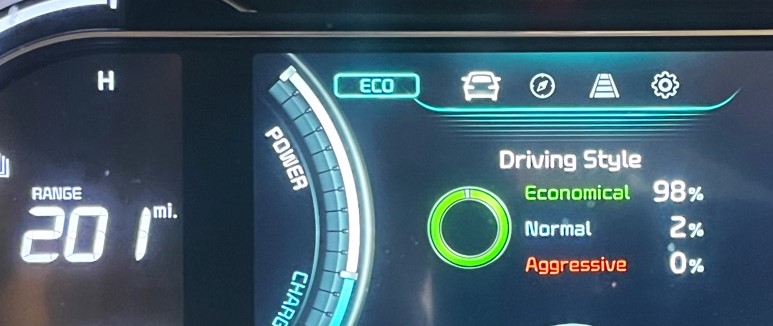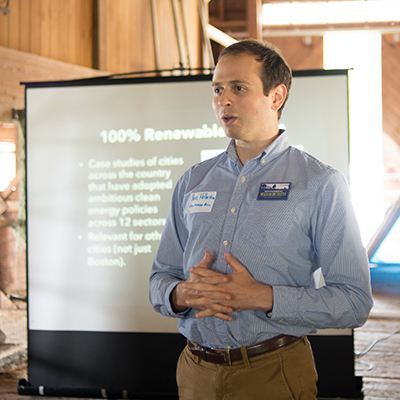
Cool Solutions
Ten Emerging Technologies and Trends that Can Help Massachusetts Meet Bold Goals for Curbing Global Warming
Achieving the goal of cutting emissions by at least 80 percent by 2050 will require Massachusetts to fully implement previous commitments to reduce global warming pollution. It will also require us to take full advantage of a new wave of game-changing opportunities – highlighted in Cool Solutions, from cutting-edge technologies to emerging societal trends – that can help Massachusetts build on its position of national leadership in the fight against global warming.

Downloads
Massachusetts has made great progress in reducing its contribution to global warming over the past decade. We use less energy in Massachusetts today than we did in the late 1980s, more of it comes from solar and wind power than ever, and our economy is growing in ways that are less energy-intensive than in the past.
Despite this progress, however, Massachusetts is not yet on track to hit our 2020 target for reducing greenhouse gas emissions – a target that we must meet in order to do our part to prevent the worst impacts of global warming. Massachusetts also has yet to set a new target for emission reductions for 2030, which is now just 15 years away.
To ensure that the Commonwealth stays on track to meet its target under the Global Warming Solutions Act of cutting emissions by at least 80 percent by 2050, Massachusetts should adopt a target of reducing greenhouse gas emissions to at least 45 percent below 1990 levels by 2030.
Achieving that goal will require Massachusetts to fully implement previous commitments to reduce global warming pollution. It will also require us to take full advantage of a new wave of game-changing opportunities – from cutting-edge technologies to emerging societal trends – that can help Massachusetts build on its position of national leadership in the fight against global warming.
Massachusetts is reducing greenhouse gas emissions, but still falling short of its goals.
- Greenhouse gas emissions in Massachusetts were 15 percent lower in 2011 than they were in 1990, due in part to improvements in the energy efficiency of buildings and vehicles and increasing use of clean energy sources such as wind and solar power.
- Massachusetts is not on track to achieve the 25 percent emission reduction (from 1990 levels) required under the Global Warming Solutions Act. A 2014 analysis by the Global Warming Solutions Project estimated that the Commonwealth will fall 20 percent short (about 4 million metric tons carbon dioxide equivalent, or MMTCO2e) of the emission reductions needed to achieve the 2020 target.
Massachusetts should set a goal of reducing greenhouse gas emissions to at least 45 percent below 1990 levels by 2030.
- The Global Warming Solutions Act requires Massachusetts officials to establish an interim emission reduction target for 2030 – an important waypoint along the path toward the 80 percent emission reductions required under the law by 2050.
- Assuming that the Commonwealth achieves its 2020 emission reduction target, Massachusetts would need to reduce greenhouse gas emissions by an average of 1.7 MMTCO2e per year after 2020 to achieve the 2050 target. By 2030, this would represent a reduction of 43 percent below 1990 levels. Setting a target of 45 percent emission reductions by 2030 would ensure that Massachusetts maintains or exceeds the pace of emission reductions needed to meet its climate commitments.
Figure ES-1. Historical Greenhouse Gas Emissions and Trajectories Needed to Achieve 2020, 2030 and 2050 Emission Reduction Targets
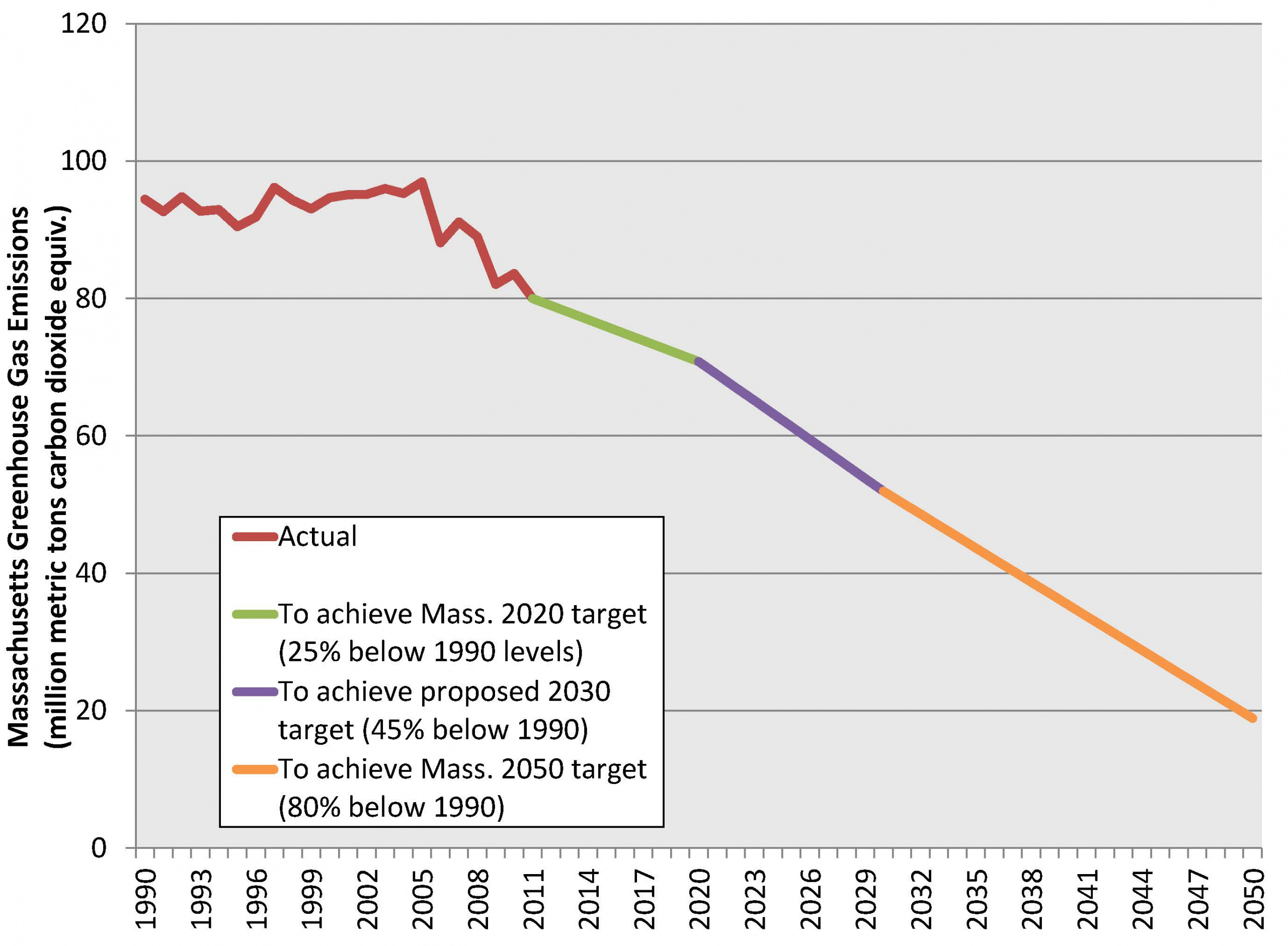
Figure ES-2. Projected Carbon Dioxide Emissions from Fossil Fuel and Electricity Consumption without Further Policy Action, Massachusetts
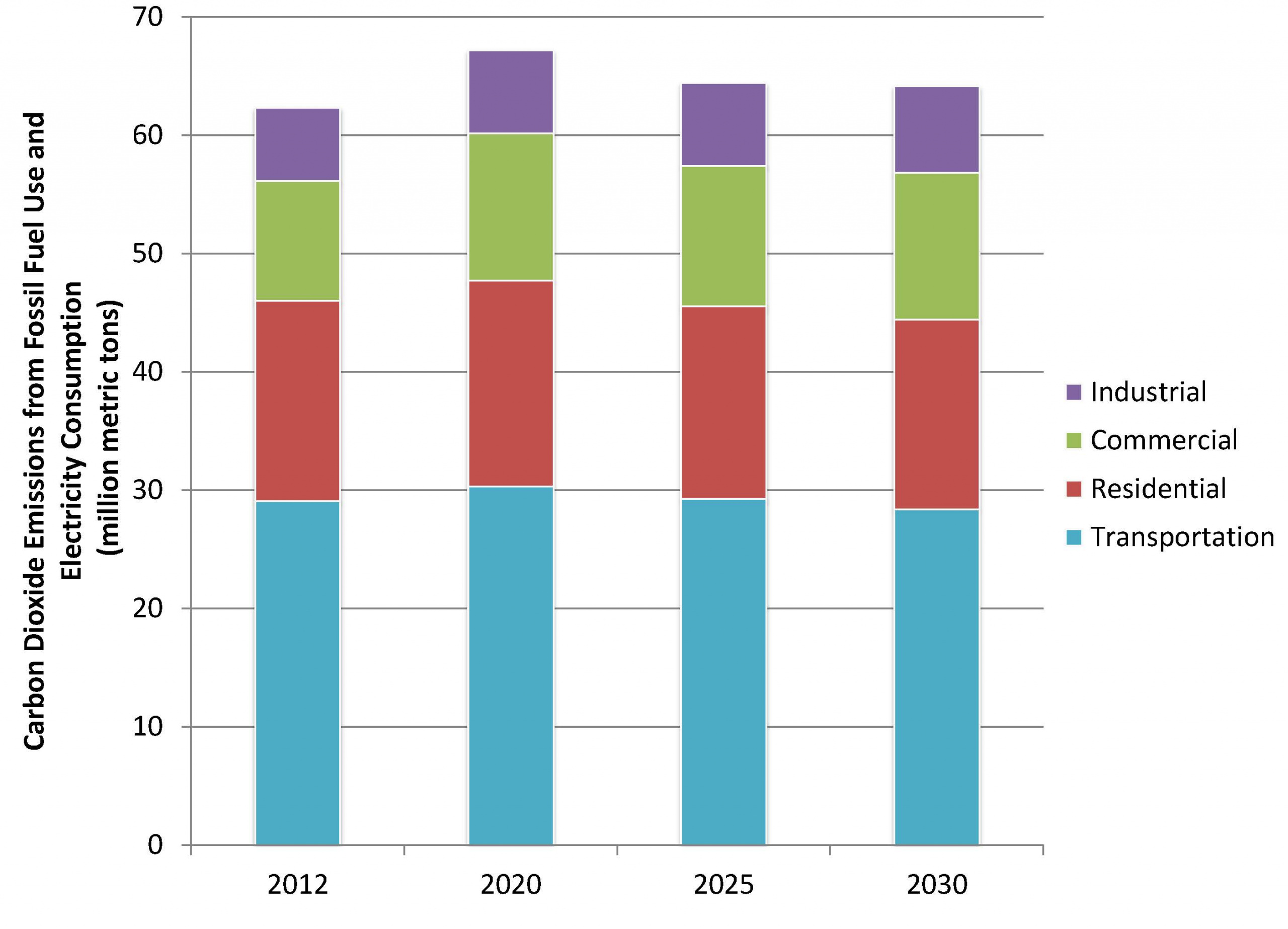
Massachusetts has a series of game-changing opportunities to achieve dramatic reductions in greenhouse gas emissions and meet an aggressive emission reduction target for 2030.
1) Solar photovoltaics: Massachusetts has 200 times more solar energy today than it did in 2008, with plenty of room for further growth. With prices for solar energy continuing to plummet, Massachusetts should commit to obtaining at least 20 percent of its electricity from the sun by 2030, and ensure that the benefits of solar energy are available to everyone.
2) Offshore wind: Massachusetts has enough offshore wind energy potential to power the Commonwealth 11 times over. Tapping just a small share of that potential would enable Massachusetts to get 20 percent of its electricity from offshore wind energy by 2030.
3) Energy storage: Repowering our economy with renewable energy will require investments in a more flexible, adaptable grid. States such as California are already beginning to integrate energy storage technologies into their electric systems, and with the cost of storage technologies falling, Massachusetts should commit to do the same.
4) New energy efficiency tools: LED lighting and “intelligent efficiency” measures that use information technology to better manage energy use are among the advancing technologies that can enable Massachusetts to maintain and build on its track record of national leadership in energy efficiency.
5) Renewable heating and cooling: Renewable energy sources can help reduce the amount of oil and gas we use to heat and cool buildings, as well as to heat water. Recent technological improvements and cost reductions have made technologies like air-source heat pumps increasingly attractive for homeowners and businesses.
6) Net zero-energy buildings: Massachusetts already has a small but growing number of buildings that produce as much energy as they consume over the course of a year. Stronger building codes and adoption of new “stretch” codes can make zero and near-zero energy buildings more common throughout Massachusetts.
7) Urbanization and smart growth: Massachusetts is experiencing a sea change in development patterns, with more people moving to cities and walkable neighborhoods and slower growth in sprawling suburban areas. Residents of more compact neighborhoods tend to use less energy, especially for transportation.
8) Reinventing public transportation: Ridership on public transportation systems such as the MBTA is on the rise, yet a history of underinvestment has left transit systems unable to respond to the growing 21st century demand for new transportation options. Repairing and expanding our transit systems will give more Massachusetts residents the option not to drive.
9) New transportation tools: Carsharing, bikesharing, ridesourcing apps such as Uber and Lyft and other high-tech tools and apps are revolutionizing transportation and providing more Massachusetts residents with the option to reduce their dependence on private cars.
10) Electric vehicles: Plug-in vehicles powered in part or entirely by electricity are increasingly common sights on Massachusetts roads. By 2030, Massachusetts could accommodate more than a half-million electric vehicles, slashing our reliance on petroleum.
Massachusetts should aim to reduce greenhouse gas emissions by 45 percent below 1990 levels by 2030, and seek to achieve the goal by:
1) Implementing key policies in the Commonwealth’s Clean Energy and Climate Plan
The Commonwealth has failed to implement several key policies proposed in the 2010 Clean Energy and Climate Plan, including policies such as clean fuel standards and new pricing models for auto insurance with the potential to curb greenhouse gas emissions from transportation. Massachusetts should move quickly to implement those policies or adopt alternative approaches that can deliver equal or greater emission reductions.
2) Fulfilling existing clean energy commitments
Massachusetts has made bold commitments to take advantage of all cost-effective opportunities for energy efficiency, adopt the nation’s strongest building codes, triple the number of miles traveled by walking, biking and transit, and more. Implementation of those commitments, however, has not always followed fully or quickly. Massachusetts should ensure that these and other commitments to reduce energy consumption and greenhouse gas emissions are fully implemented.
3) Taking advantage of game-changing opportunities
Taking full advantage of the game-changing opportunities discussed in this report could reduce global warming pollution in the Commonwealth by an additional 14.1 million metric tons by 2030 – achieving most of the additional emission reductions needed to hit the 45 percent emission reduction goal.
Figure ES-3. Carbon Dioxide Emissions with Implementation of Game-Changing Opportunities
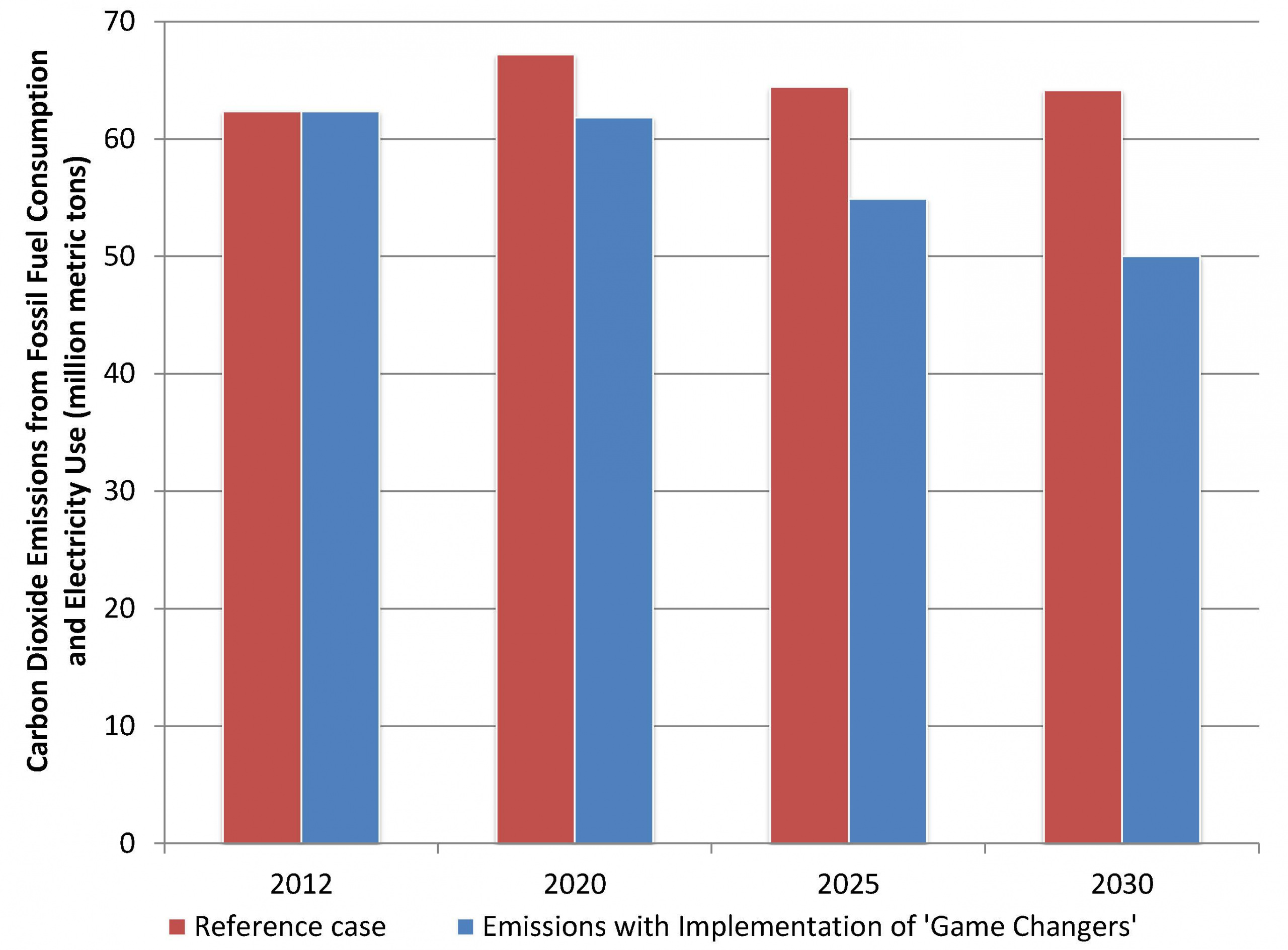
To tap those opportunities, Massachusetts should:
- Set ambitious goals for adoption of renewable energy and lower the barriers that currently stand in the way of clean energy.
- Speed the introduction of next-wave energy efficiency technologies through utility efficiency programs, adoption of a new “stretch” building energy code, and other measures.
- Focus infrastructure investments on supporting low- or zero-carbon options for transportation and energy supply, rather than locking the Commonwealth into dependence on fossil fuels for the long run.
- Following the successful example of the Regional Greenhouse Gas Initiative, consider measures to put a price on greenhouse gas emissions, providing an economic incentive for individuals and businesses to take action to reduce their contribution to global warming.
Topics
Authors
Tony Dutzik
Associate Director and Senior Policy Analyst, Frontier Group
Tony Dutzik is associate director and senior policy analyst with Frontier Group. His research and ideas on climate, energy and transportation policy have helped shape public policy debates across the U.S., and have earned coverage in media outlets from the New York Times to National Public Radio. A former journalist, Tony lives and works in Boston.
Ben Hellerstein
State Director, Environment Massachusetts Research & Policy Center
Ben directs Environment Massachusetts’ efforts to promote clean air, clean water, clean energy and open spaces in Massachusetts. In 2016, he launched a campaign to repower Massachusetts with 100 percent renewable energy. Prior to assuming his current role, Ben led the organization’s effort to get Massachusetts to 20 percent renewable electricity by 2025. His areas of expertise lie in renewable energy and the impacts of fossil fuel pollution, and he has authored reports on clean energy policies at the local, state and federal levels, earning media coverage statewide. Ben lives in Boston, where he enjoys exploring the city on foot, by bike and by public transit.
Find Out More

Five key takeaways from the 5th National Climate Assessment

Carbon dioxide removal: The right thing at the wrong time?

Fact file: Computing is using more energy than ever.
